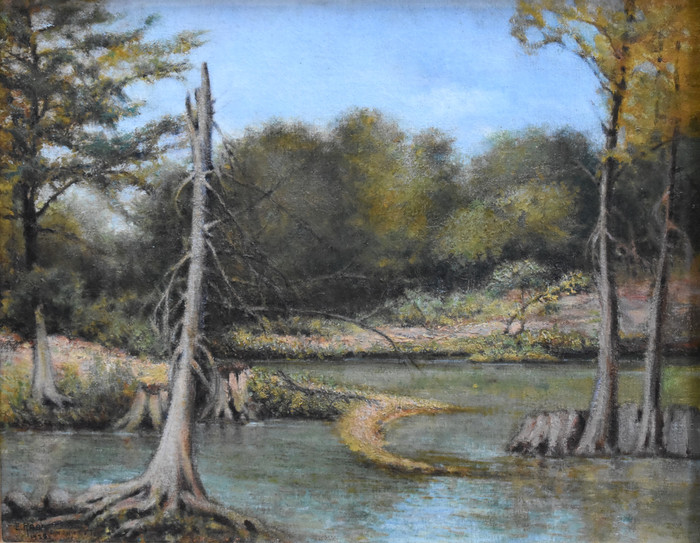Ernst Raba "San Antonio Bat-Roost
-
- Ernst Raba
- (1874 – 1951)
- San Antonio Photographer/Artist
- Image Size: 20 x 16
- Frame Size: 26 x 30
- Medium: Photograph
- Circa 1920s
- "San Antonio Bat-Roost
- Contact for Price & Info
- View All By This Artist
Details
Early Large photograph by Ernst Raba. Very unusual subject. Ernst Raba was an early San Antonio Artist and Photographer
-
-
Biography
Ernst Raba (1874 – 1951)
Photographer Ernst Wilhelm Raba (1874 – 1951) chose San Antonio, Texas as his homeland just before the turn of the century. Born in Friedland, Bohemia, where he had received training as an apprentice photographer, the 17-year-old Raba arrived in San Antonio to visit relatives in 1891. What Raba discovered was a city still in transition between a boisterous cowtown and a respectable Victorian center of trade and commerce. The previous decade, since the coming of the railroads in 1877, had been one of tremendous growth. Population had tripled since 1870 to 37,673; imposing streetcars, gas and electric lights, piped water and paved main streets – all had contributed to rapid change. Still, many of the old landmarks and much of the old culture still remained.Raba’s first employment as a photographer was with two early San Antonio professional photographers: Mary E. Jacobson and Asa Brack. Before the turn of the century, he opened his own studio near, then on, Alamo Plaza. When he relocated to the top floor of the Riverside (now Clifford) Building in 1919, he had already established himself as a portrait photographer of some merit.By 1929, Raba had moved his studio to his home at 502 E. Guenther Street, which became a regular gathering place for an art club he helped establish in 1895. The group included painters Jose Arpa and the Onderdonks, engraver Charles Simmang, newspaperman William Sidney Porter (O. Henry), and many others. Throughout these years, Raba continued to photograph his family and friends, his associates in the Beethoven Maennerchor and St. Joseph’s Society, and hundreds of patrons, including Teddy Roosevelt and Gutzom Borglum. Raba also continued to collect pictures of the city he loved. One scholar has suggested Raba’s interest in collecting pictures of old San Antonio may have been stimulated by two commercial commissions, one by Albert Steves, Sr., who commissioned him to adapt older pictures for use in a magic lantern. In 1923, Alexander Joske also commissioned him to prepare 50 large hand-painted photographs of historical scenes of San Antonio to display for the store’s 50th anniversary. But it is also certain that Raba was an early preservationist. In 1909, he made a “one-man-stand” when the Veramendi Palace on Soledad Street was razed, and his vivid pictures of the doomed structure register his outrage. And in 1947, when he was pictured still actively working in his studio at the age of 73, Raba was quoted by the San Antonio Express Magazine, “It is a shame that I did not get more of the old buildings that have been torn down.” Through his own photography and his careful reproductions of older photographs that might otherwise have been lost, Raba preserved more than he knew.The Society’s Capital Club funded digitization of this collection. Collection description excerpted from pamphlet, “Ernst Wilhelm Raba: 1874 – 1951”, written by Marlene Gordon.



